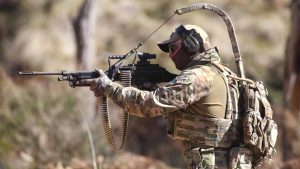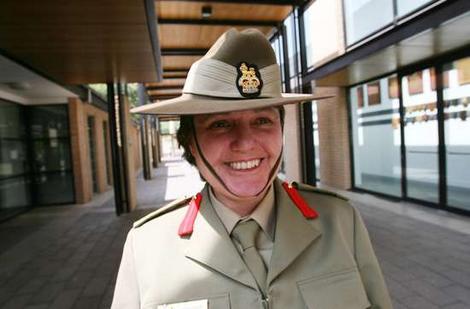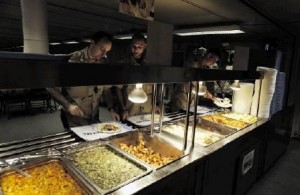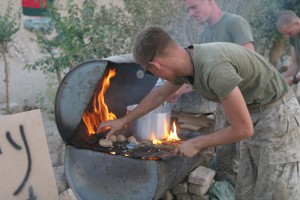Senses heightened and with sweaty hands gripping their automatic rifles, the Australian commandos crept through the dark near the village of Surkh Morghab, in southern Afghanistan. Arriving at a mud-walled home, they looked through their night vision goggles for any signs of the local Taliban leader Mullah Noorullah. Intelligence had indicated he might be here, but after conducting a search the troops turned up nothing – in Defence speak, the house was ”dry”.
On that cold February night last year, with whispered commands, they then moved on to another nearby compound. It was to be a fateful decision. Within minutes the surreptitious operation was interrupted by bursts of gunfire, shouted orders and the explosive thump of grenades. Six innocent people were killed, including two babies.
Now, more than a year later, this operation is at the centre of one of the most serious war crimes investigations faced in decades by the Australian Defence Force.
The fate of those involved – the soldiers on the ground that night and their commanding officer back in Kandahar – is in the hands of the Brigadier Lyn McDade. As the Director of Military Prosecutions, she sits in an office in Canberra where she is charged with weighing up what happened in a few chaotic minutes during that night-time operation more than a year ago. That she is said to be considering criminal charges points to the gravity of her decision. No Australian soldier has faced manslaughter charges in Afghanistan or Iraq. And senior military lawyers say they recall no such case during Vietnam.
Today, The Age reveals that a central element of the case surrounds the ”Concept of Operations” document, known as CONOPS. This is a highly scrutinised plan prepared before any major operation. It is a complex checklist that ensures that any plans abide by the tactics, strategy, regulations, and legal framework stipulated by the Australian Defence Force. Before a CONOPS is approved, it passes up the chain of command and often past the eyes of military lawyers.
The extent to which this CONOPS discussed raiding the second compound is likely to be crucial for Brigadier McDade, and any decision she makes on charges of negligence. It is not clear if the second raid was outlined in detail, or at all, in the CONOPS. This will be central to Brigadier McDade’s view of whether the evidence can sustain a charge of negligence. If so, any prosecution case would rest on who gave a command to move on the second compound, and how such a decision was made.
Adding difficulty to Brigadier McDade’s task is the fact that she does not have all the pieces of the puzzle. The Age has confirmed that investigators could not visit the scene of the incident and did not meet any survivors of the attack. In part this is because the troops that would have been needed to provide security for such a visit were occupied with other operations when the request was made.
Still, recollections from numerous sources allows The Age to tell some of the story of that night in greater detail than before.
As they do on so many nights of every week of every ”rotation” or tour of duty, the commandos that February night had what they call ”reliable intelligence”. This intelligence stated that a Taliban leader was likely to be at what the military call a ”compound of interest” near the village. It is just 10 kilometres away from the sprawling base that Australian troops share with the Dutch and Americans in the town of Tarin Kowt.
A CONOPS was prepared, the raid went ahead, but no Taliban leader was found. The soldiers on the night would have known that it is often hard to gauge the reliability of an intelligence report. But intelligence is almost always assessed stringently before it is acted on. Even then, initially reliable evidence can lead to a dead end.
The commandos then moved on to look for the Taliban leader. If intelligence was used in the decision to go to the second compound where the bloodshed eventually occurred, the prosecutor will look at that intelligence. She will examine how that intelligence was scrutinised in the lead-up to the night-time mission.
Entering a compound at night requires precision and care. As the soldiers started moving through this second compound they dragged one man, Zahir Kahn, out of bed. SBS’s Dateline program recently broadcast an interview with Zahir Kahn in which he says the shooting started soon after he woke up. It is what happened in the next few furious minutes that will be considered by prosecutors.
As some of the Australians dealt with Zahir Kahn, other commandos scanned the compound for possible threats. The soldiers say they saw Zahir’s brother, Amrullah, pointing a weapon at them. They say they opened fire, as they are trained to do if they perceive a life-threatening risk.
Other soldiers have been cleared in previous incidents after shooting first, even when the Army could not establish that those killed had been armed. Shooting first can be permitted under the rules of engagement and the laws of war.
The initial public statement from the ADF in February last year said, “the soldiers were fired upon by Taliban insurgents”. A more recent statement from Defence simply said: ”We can confirm that Australian forces were involved in an exchange of fire with an Afghan man.”
Had this operation stopped here, it might have attracted little mention beyond a brief ADF press release. But once the shooting started, the Australians also responded with hand grenades. It was over in minutes, but when the smoke cleared, the detained man’s brother, Amrullah, was dead. So was Amrullah’s teenage sister, 10-year-old son, 11-year-old nephew, and two babies – a one-year-old boy and a two-year-old girl.
Because hand grenades were used in response to continued firing, Lyn McDade will carefully weigh who gave the order, or made the decision, to throw the grenades, and whether it was a proportionate response. The prosecutor will only lay charges if she thinks there is a reasonable prospect of a guilty verdict. Such a verdict would come from the six military professionals sitting on a jury in a military court.
Those at the centre of the allegations have disputed some of the claims made against them, which is why the details being considered by the prosecutor are crucial. There are disputed accounts, but The Age understands that some at the scene believe there were significant indications that unarmed civilians were close by. However, any interaction with civilians is complicated by the knowledge that Taliban fighters are part of the local population; in many cases they fight from their own homes, which for centuries have been designed as mini-forts to repel intruders.
Sustaining any criminal charges would require substantial corroborated evidence. Without access to the scene of the attack or to the survivors, it may be difficult to convince a jury of military professionals that the evidence points to a guilty verdict beyond reasonable doubt.
What galls the soldiers watching this process unfold is that unlike most of us, they have lived through the danger of these situations. Soldiers know that in the midst of a firefight, even battle-hardened veterans find it tough to work out how many people are shooting at them, and from where.
So, this investigation, and the prospect of a possible prosecution, has sparked whispers of recrimination and anger among the military. With dismay reverberating through the ranks of Australia’s army – and the defence force as a whole – the stakes are extraordinarily high.
If charges are laid it will open up a significant can of worms for the Defence Force. It will have ramifications for the future training of soldiers, fuelling claims and counter-claims about an investigation that some say only searched for scapegoats. And it will test the fairness and thoroughness of Australia’s military justice system.
There have been a series of investigations into this incident, with some restarted after complaints from the soldiers involved. There have also been rumblings about the six-month delay in transferring this case to the military police, the ADF’s Investigative Service (ADFIS).
However, that formal investigation faced formidable hurdles.
Last year the investigators in this case could not get to the compound that was the scene of such violence months ago. To escort them there would have required armed troops and vehicles, diverting resources from important operations. After careful consideration, it was decided no escort would be possible.
The investigators, and the special forces soldiers needed to protect them, also understood that such excursions were not a simple act. Turning up with an armed group of soldiers to ask questions at an Afghan house is very different to an Australian homicide investigation. The Australian newspaper did get to the site of the raid recently and interviewed the father of one of the victims. He reportedly said he did not blame the Australian soldiers, who, he said, had been misled by a local spy. However, the military believes its investigations face difficulties with similar searches for the truth.
She is a former civilian lawyer who has no previous military experience (and certainly no Australian infantry combat action badge), but who was brought into the new military justice system to aid in efficiency and effectiveness. Has she accomplished this? “There has been widespread discontent with the take-no-prisoners approach of the Director of Military Prosecutions, Brigadier Lyn McDade. Military lawyers have told The Australian they believed minor offences that were previously subject to prejudicial conduct hearings had been endlessly moved into the court.”
It doesn’t bode well when the very chief of the military justice system is taking what would previously have been between a Non Commissioned Officer and his enlisted men – what in the U.S. is called non-judicial punishment – and placing it in formal military courts. It would quite literally bring military justice to a halt in the U.S., cause undermanned units, and bring with it an atmosphere of dishonesty and suspicion.







